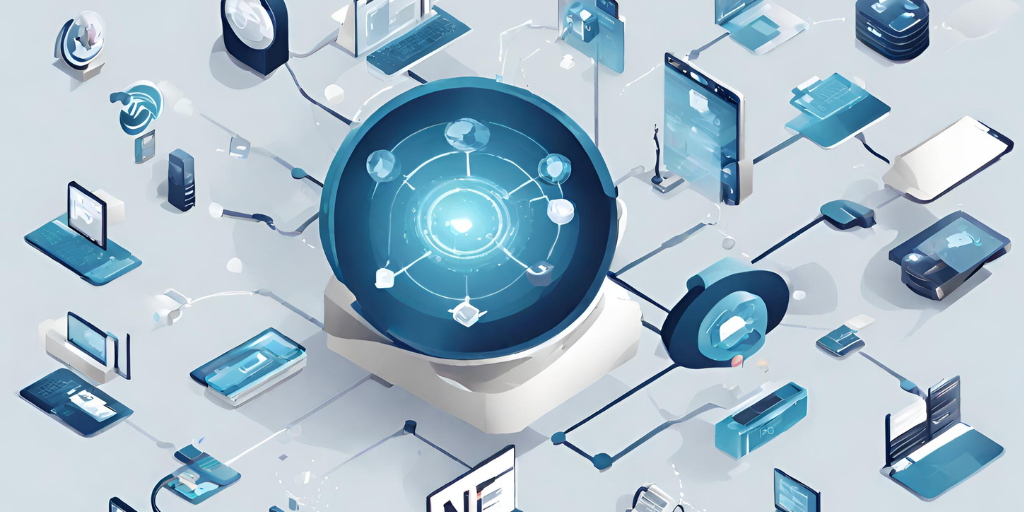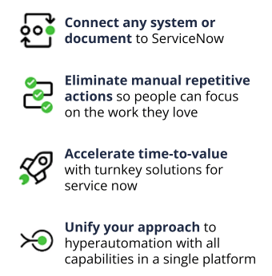Embracing the Future: How Automation and AIOps Are Transforming Enterprises

Discover the Future of Business Efficiency: Automation, AIOps, and Beyond
Dive into the transformative power of automation and Artificial Intelligence for Operations (AIOps) in today's fast-evolving business landscape. From the strategic insights of ServiceNow’s automation to the cutting-edge developments in AIOps, this article unpacks how technology is not just reshaping but revolutionising enterprise operations. Explore a real-world transformation with our case study on streamlining patient administration, and envision the future where businesses thrive on agility and innovation. Get ready to embark on a journey through the latest trends, strategic implementations, and a call to action that invites you to be part of the technological revolution.
In today’s fast-paced world, businesses are constantly facing unprecedented challenges and changes. The arrival of COVID-19 has only accelerated the need for organisations to adapt and innovate. One significant trend emerging from this period of disruption is the pivot towards automation technologies to enhance business processes and their outcomes. With the aid of advanced AI solutions, companies have reported a notable 30% boost in IT productivity and a 33% quicker resolution time, underlining the profound impact these technologies can have.
The Power of Automation with ServiceNow
ServiceNow, a leading digital workflow company, champions the philosophy of connecting and automating anything to their platform.
Marcus Torres, the Integration Hub GM & VP of Platform Product Management at ServiceNow, emphasises the importance of a human-centric approach in automation. He argues that intelligent automation should aim to augment human activities, not replace them, thereby enhancing the capability of teams and individuals rather than rendering them obsolete.
"Automate and connect anything to ServiceNow" - ServiceNow proclaims
ServiceNow’s Automation Engine exemplifies this philosophy perfectly. It offers a quick way to:
- Connect to any system!
- Automate repetitive tasks through Robotic Process Automation (RPA)
- This frees up valuable time for employees to focus on more strategic work.

The Rise of AIOps
Parallel to the advancements in automation is the development of AIOps, a blend of artificial intelligence (AI) and IT operations (Ops).
This innovative approach applies machine learning, analytics, and data science to automatically identify and fix IT operational issues. It’s a game-changer for IT operations, with nearly 90% of CIOs either already utilising AIOps or planning to do so.
According to The Global CIO Point of View, nearly nine out of ten CIOs are either already employing this technology, or are planning to adopt it soon.

How AIOps Works:
- Data Selection: Evaluating colossal amounts of IT data to identify relevant elements.
- Pattern Discovery: Locating correlations and grouping data for further analysis.
- Inference: Identifying root causes to inform action.
- Collaboration: Notifying the right teams and facilitating collaboration.
- Automation: Automatically responding to and remediating issues.
Navigating AIOps Trends and Demands
The IT landscape is rapidly evolving, with:
- Expanding IT environments
- Exponentially increasing data volumes
- A growing need for speedy infrastructure problem resolution
- More computing power moving to the network's edge
- Growing developer influence, but not accountability
AIOps addresses these challenges by leveraging machine learning and AI for effective data analysis and reporting.
A Three-Phased Approach to AIOps
Adopting AIOps effectively involves a three-phased approach:
- Predicting issues before they occur
- Preventing impact on end users
- Automating remediation and resolution processes
This approach not only streamlines support and incident response but also plays a crucial role in digital transformation, cloud adoption/migration, and DevOps adoption.
From Siloed Steps to Unified Flows: A Case Study
Karen works as a Developer at a company that links businesses with healthcare services. Her role involves supporting the Centralised Patient Administration system. The company aims to provide a comprehensive platform where healthcare professionals can list their services and access various other features.
Old Patient Administration System:

New Patient Administration Application using ServiceNow (Enhances Staff, Patient and Doctor Experiences):

Furthermore, the company has successfully implemented a fully automated, end-to-end system for managing patient searches, appointments/referrals, and support for critical cases (using ServiceNow playbooks) all in one place. Overall, ServiceNow has provided a flexible, adaptive digitised & connected healthcare solution that improved the accuracy, quality, and speed of patient data services.
The Path Forward
The integration of automation technologies and AIOps into business operations represents a significant shift towards more efficient, resilient, and agile enterprises. By focusing on augmenting human efforts rather than replacing them, organisations can harness the full potential of these technologies to navigate the complexities of the modern IT landscape.


.jpg)
